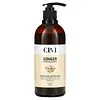What's inside
What's inside
 Key Ingredients
Key Ingredients

 Benefits
Benefits

 Concerns
Concerns

 Ingredients Side-by-side
Ingredients Side-by-side

Water
Skin ConditioningStearyl Alcohol
EmollientParaffinum Liquidum
EmollientCetyl Alcohol
EmollientGlycerin
HumectantHorse Fat
Skin ConditioningCamellia Sinensis Callus
AntimicrobialSteartrimonium Bromide
PreservativeStearoxypropyltrimonium Chloride
CleansingDimethicone
EmollientCyclopentasiloxane
EmollientTrideceth-3
EmulsifyingC12-14 Pareth-5
CleansingPolyquaternium-10
Hyaluronic Acid
HumectantHydrolyzed Silk
HumectantCetyl-Pg Hydroxyethyl Palmitamide
Skin ConditioningArginine
MaskingButylene Glycol
HumectantCitric Acid
BufferingEthylparaben
PreservativeParfum
MaskingWater, Stearyl Alcohol, Paraffinum Liquidum, Cetyl Alcohol, Glycerin, Horse Fat, Camellia Sinensis Callus, Steartrimonium Bromide, Stearoxypropyltrimonium Chloride, Dimethicone, Cyclopentasiloxane, Trideceth-3, C12-14 Pareth-5, Polyquaternium-10, Hyaluronic Acid, Hydrolyzed Silk, Cetyl-Pg Hydroxyethyl Palmitamide, Arginine, Butylene Glycol, Citric Acid, Ethylparaben, Parfum
Water
Skin ConditioningDisodium Laureth Sulfosuccinate
CleansingSodium C14-16 Olefin Sulfonate
CleansingCocamidopropyl Betaine
CleansingSodium Chloride
MaskingHydrogenated Poly(C6-14 Olefin)
EmollientPolysorbate 20
EmulsifyingZingiber Officinale Root Oil
MaskingZingiber Officinale Root Extract
MaskingHoney Extract
HumectantPropolis Extract
Skin ConditioningRoyal Jelly Extract
Skin ConditioningArgania Spinosa Kernel Oil
EmollientOlea Europaea Fruit Oil
MaskingSimmondsia Chinensis Seed Oil
EmollientPolyquaternium-10
Piroctone Olamine
PreservativeMethylpropanediol
SolventLaurylpyridinium Chloride
AntimicrobialAllantoin
Skin ConditioningCaramel
Cosmetic ColorantDisodium EDTA
Parfum
MaskingWater, Disodium Laureth Sulfosuccinate, Sodium C14-16 Olefin Sulfonate, Cocamidopropyl Betaine, Sodium Chloride, Hydrogenated Poly(C6-14 Olefin), Polysorbate 20, Zingiber Officinale Root Oil, Zingiber Officinale Root Extract, Honey Extract, Propolis Extract, Royal Jelly Extract, Argania Spinosa Kernel Oil, Olea Europaea Fruit Oil, Simmondsia Chinensis Seed Oil, Polyquaternium-10, Piroctone Olamine, Methylpropanediol, Laurylpyridinium Chloride, Allantoin, Caramel, Disodium EDTA, Parfum
Ingredients Explained
These ingredients are found in both products.
Ingredients higher up in an ingredient list are typically present in a larger amount.
Parfum is a catch-all term for an ingredient or more that is used to give a scent to products.
Also called "fragrance", this ingredient can be a blend of hundreds of chemicals or plant oils. This means every product with "fragrance" or "parfum" in the ingredients list is a different mixture.
For instance, Habanolide is a proprietary trade name for a specific aroma chemical. When used as a fragrance ingredient in cosmetics, most aroma chemicals fall under the broad labeling category of “FRAGRANCE” or “PARFUM” according to EU and US regulations.
The term 'parfum' or 'fragrance' is not regulated in many countries. In many cases, it is up to the brand to define this term.
For instance, many brands choose to label themselves as "fragrance-free" because they are not using synthetic fragrances. However, their products may still contain ingredients such as essential oils that are considered a fragrance by INCI standards.
One example is Calendula flower extract. Calendula is an essential oil that still imparts a scent or 'fragrance'.
Depending on the blend, the ingredients in the mixture can cause allergies and sensitivities on the skin. Some ingredients that are known EU allergens include linalool and citronellol.
Parfum can also be used to mask or cover an unpleasant scent.
The bottom line is: not all fragrances/parfum/ingredients are created equally. If you are worried about fragrances, we recommend taking a closer look at an ingredient. And of course, we always recommend speaking with a professional.
Learn more about ParfumPolyquaternium-10 is an ammonium salt of hydroxyethylcellulose. It is a white and granular powder used as a film-former and anti-static agent.
This ingredient is commonly found in hair conditioning products. According to a manufacturer, its positive charge makes it great for absorbing hair proteins. The manufacturer also states this ingredient helps with curl retention.
For haircare friends: this ingredient is not a silicone.
Learn more about Polyquaternium-10Water. It's the most common cosmetic ingredient of all. You'll usually see it at the top of ingredient lists, meaning that it makes up the largest part of the product.
So why is it so popular? Water most often acts as a solvent - this means that it helps dissolve other ingredients into the formulation.
You'll also recognize water as that liquid we all need to stay alive. If you see this, drink a glass of water. Stay hydrated!
Learn more about Water